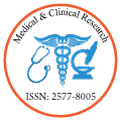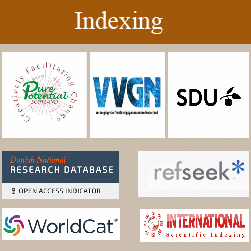Ovulation Induction in Patients with Polycystic Ovarian Syndrome (PCOS) & Hyperprolactinemia (HPRL): Efficacy of Letrozole (LE) Combined with Cabergoline (CE) in Comparison to (LE) Alone
Author(s):
Aisha Mohamed Elbareg* and Fathi Mohamed Essadi
Objectives: (PCOS) is the most common cause of anovulatory infertility, with majority of patients having mild (HPRL). (CE), a dopamine receptor agonist, inhibits prolactin secretion, leading to better ovulatory response. (LE), an aromatase inhibitor, without adverse effects on endometrium & induces fewer mature follicles with less risk of OHSS. Our aim was to investigate effects of combined (LE) & (CE) in comparison to (LE) alone on ovulation & clinical pregnancy rates in (PCOS) patients with (HPRL).
Patients & Methods: 180 women with (PCOS) and of 22-38 years old, were enrolled in a hospital based clinical trial. Patients randomly allocated into 2 groups, (A&B). All with a serum prolactin > 32 ng/ml. Patients in (A): (92) were given (LE), 5mg for 5days: (3 – 7 of the cycle)/3 cycles and (CE), 0.5mg weekly for 12 weeks. Those in (B): (88) received only (LE), same dose & duration as in (A). All patients were matched for their age and BMI. Exclusion criteria: other causes of (HPRL). Outcome measure: ovulation rate & detection of both chemical & clinical pregnancies by βhCG and ultrasound of fetal cardiac activity, 2-4 weeks after missed period. Follow-up for 6 months. Data analysis by using SPSS version for windows, P-value significant if (< 0.05).
Results: 3 patients from (A) & 5 from (B) had drug side effects and were excluded. None of patients were lost during the follow-up period. In (A), difference between mean serum prolactin level before & after treatment was statistically significant (P0.05). After treatment, BMI in (A) 24.1± 3.2, & 24.2 ± 3.6 in (B) (P=0.567). (56.2%) of women in (A) became regularly menstruating but only (30.1%) in (B) (P< 0.05). Ovulation rate was higher in (A) (50.6%) in comparison to (B) (26.5%), (P<0.05). Clinical pregnancy rate in (A) (41.6%) and (21.6%) in (B) (P<0.05). Neither twin pregnancy, nor OHSS were recorded in both groups.
Conclusions: The combination of (LE) & (CE) is superior to (LE) alone in management of anovulatory patients with (PCOS) and should be used as the first-line treatment for them.



